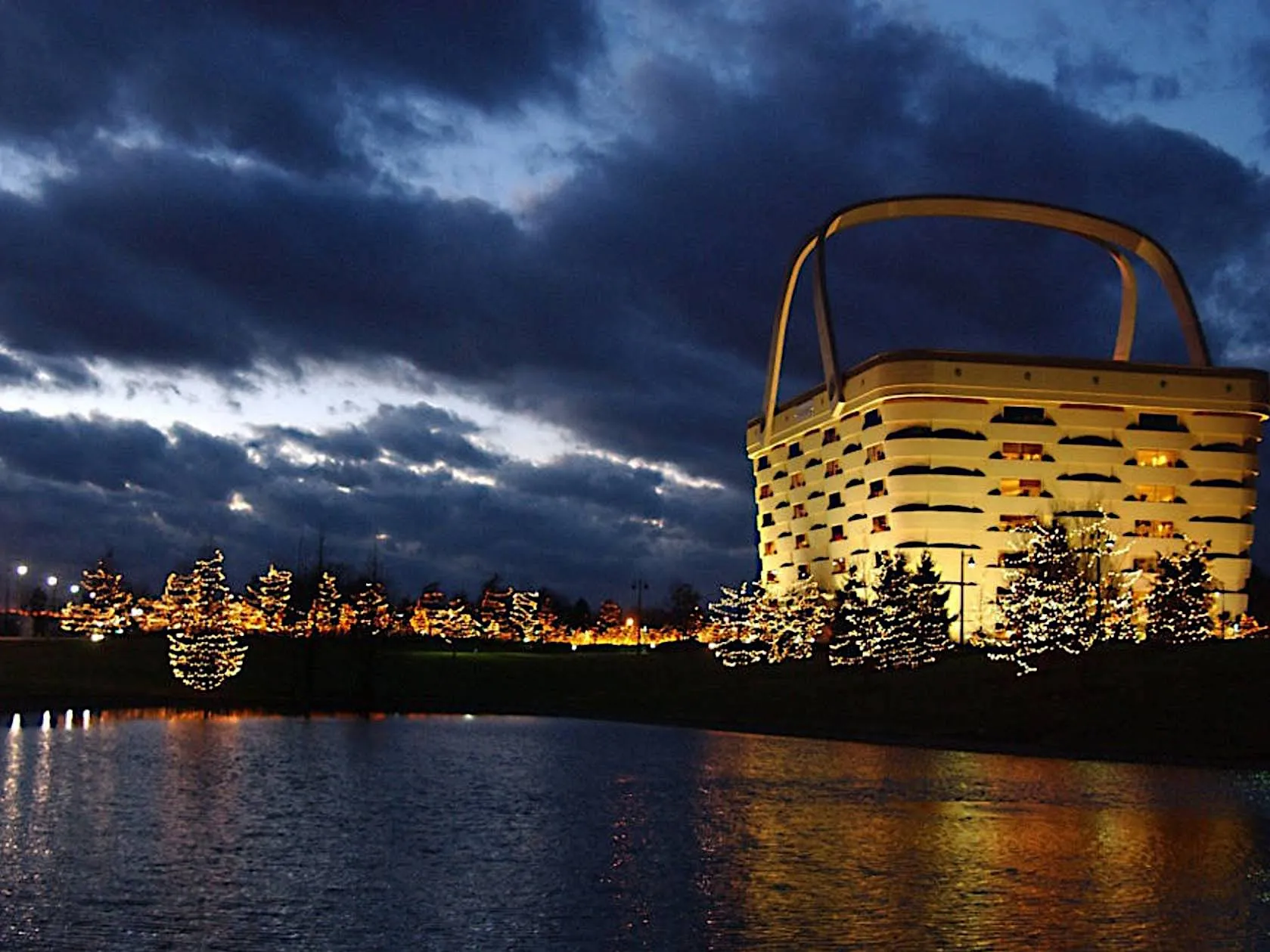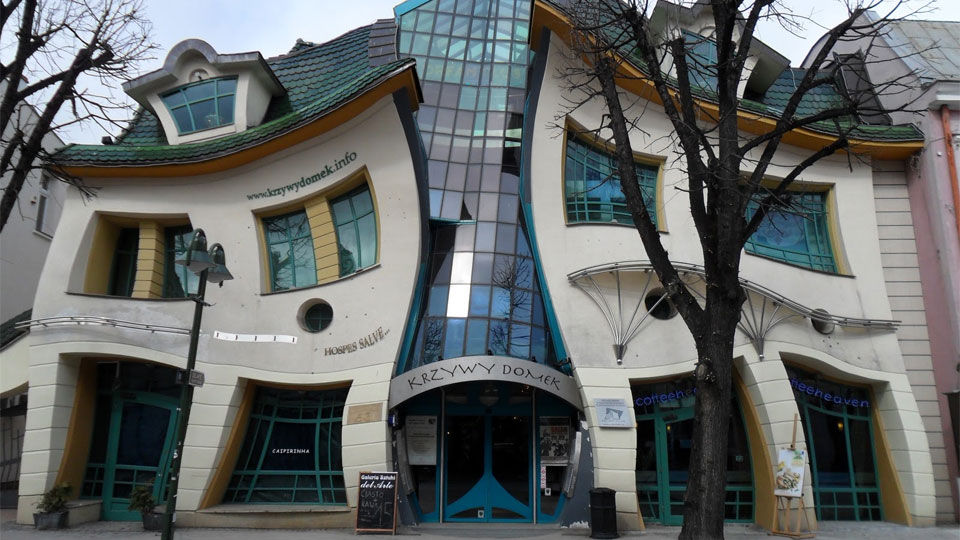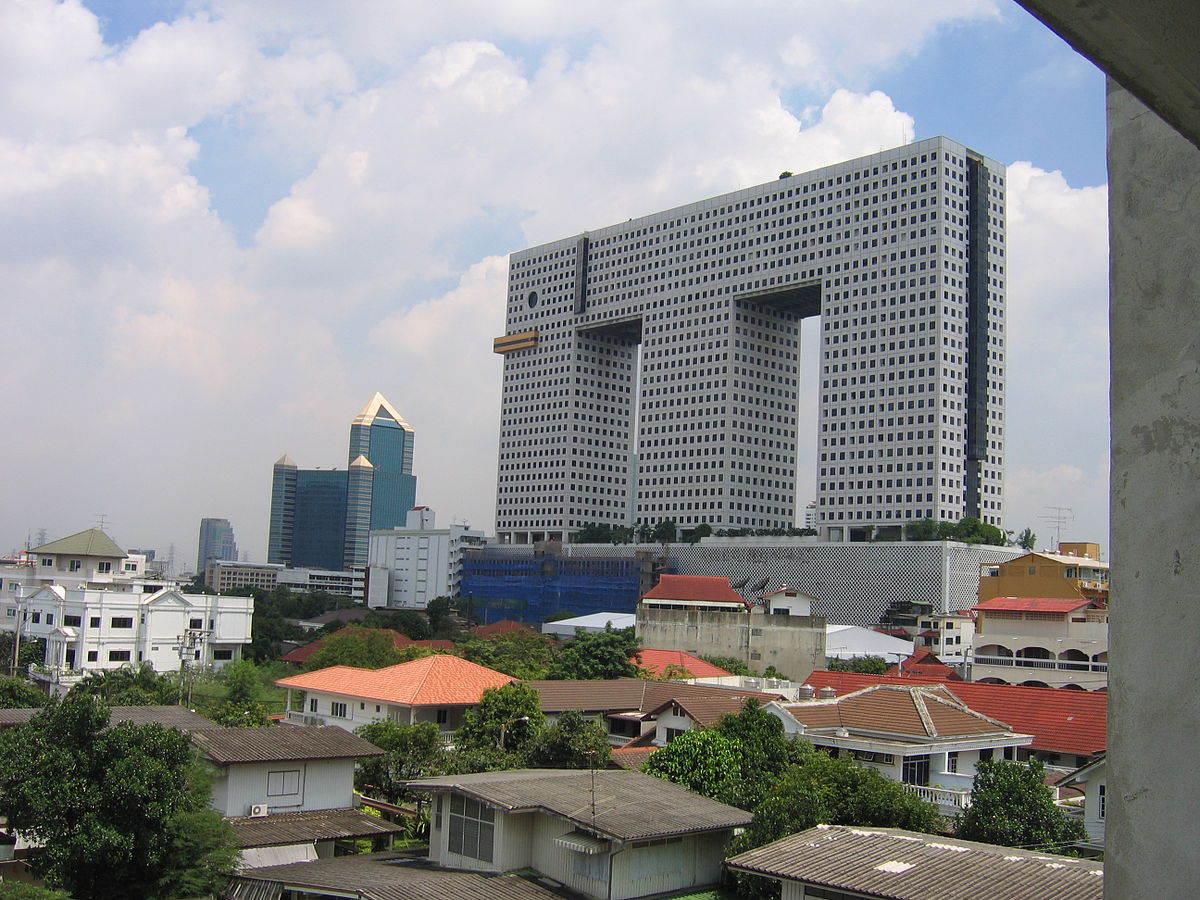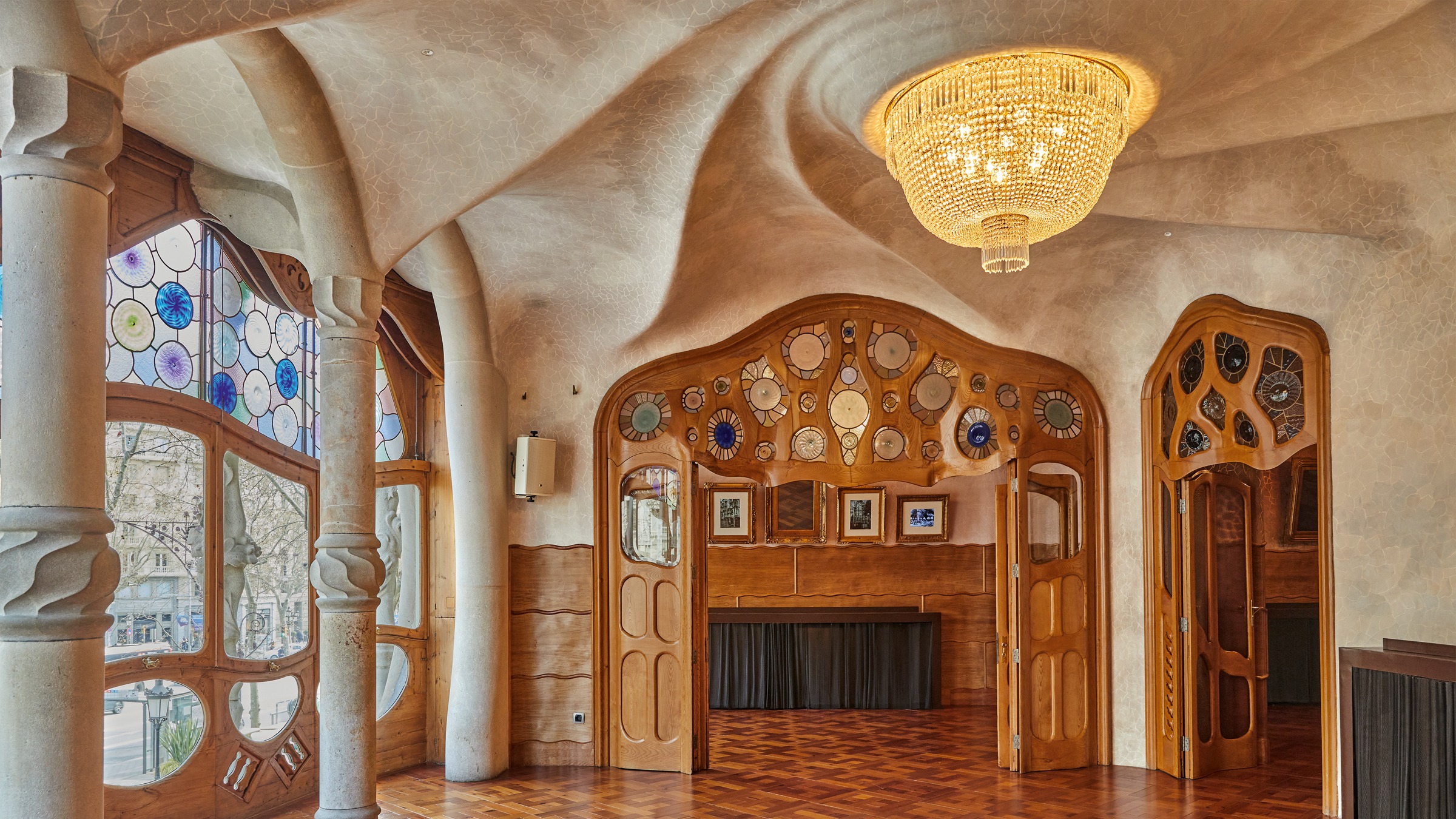Bizarre Architecture - Pushing The Limits Of Design And Functionality
Explore the fascinating world of bizarre architecture with this in-depth article. Discover unique and memorable buildings and designs from around the world, and learn how they challenge our perceptions of space, scale, and style. From the whimsical to the disorienting, this article explores the impact of bizarre architecture on the field of design and its potential to inspire future generations.
Author:Dr. Felix ChaosphereReviewer:Xander OddityMar 15, 20230 Shares474 Views

Architecture has always been a field that marries art and science, but there are times when architects push the limits of creativity and functionality to create designs that are truly bizarre. From buildings shaped like animals to upside-down houses, bizarre architecturecan be found all over the world. In this article, we explore some of the most unusual and fascinating examples of bizarre architecture.
The Crooked House, Poland
Located in the small town of Sopot in Poland, the Crooked House is a bizarre building that looks like something out of a fairy tale. Designed by architects Szotyńscy & Zaleski, the building was inspired by the drawings of Jan Marcin Szancer, a Polish artist and illustrator of children's books.
The Crooked House has an unusual shape that makes it look like it's melting or twisting. The walls are made of concrete and the roof is covered with shingles that are arranged in a haphazard pattern. Inside, the building is home to a shopping center and several restaurants, but visitors mostly come to marvel at its unique architecture.
The Basket Building, Ohio
The Basket Building is located in Newark, Ohio and was built in 1997. It was originally designed to serve as the headquarters for The Longaberger Company, a manufacturer of handcrafted baskets and other home decor items.
The building is shaped like a giant picnic basket and is made of stucco and steel. It measures 160 feet long, 100 feet wide, and 192 feet tall. Inside, the building has a 30,000 square foot atrium that serves as the company's lobby. The Basket Building is now vacant, but it remains a popular tourist attraction in Ohio.
The Dancing House, Czech Republic
The Dancing House, also known as the Fred and Ginger Building, is a bizarre architectural landmark in Prague, Czech Republic. It was designed by architects Vlado Milunić and Frank Gehry and was completed in 1996.
The building is named after the famous Hollywood dancing duo Fred Astaire and Ginger Rogers because of its unusual shape, which looks like two dancers in mid-step. The building is made of concrete and steel and features a glass dome on top that provides views of the city.
The Upside-Down House, Germany
The Upside-Down House, located in the German town of Trassenheide, is a bizarre architectural wonder that is exactly what it sounds like. The house is built upside down, with the roof serving as the floor and the floor serving as the ceiling.
Visitors to the Upside-Down House can explore the fully furnished rooms and take photos that make it look like they're walking on the ceiling. The house is a popular tourist attraction in Germany and is open year-round.
Forest Spiral, Germany
One such example is the Forest Spiral Building in Darmstadt, Germany. Designed by Austrian artist Friedensreich Hundertwasser, the building features a unique design that incorporates trees and vegetation into the facade. The building is also notable for its lack of straight lines and uniform shapes, which give it a whimsical and organic appearance.
Casa Batlló, Barcelona
Another example is the Casa Batlló in Barcelona, Spain, designed by the famous architect Antoni Gaudí. The building is known for its undulating facade, which resembles a dragon or some other mythical creature. The building also features colorful mosaics and unusual shapes, making it one of the most unique buildings in the world.
Escher Museum, Netherlands
Bizarre architecture is not limited to just buildings, either. The M.C. Escher Museum in The Hague, Netherlands is a museum dedicated to the works of the famous artist M.C. Escher. The museum is housed in a former palace and features a variety of exhibits that showcase Escher's mind-bending works of art. The building itself is also designed to be somewhat disorienting, with staircases that seem to lead nowhere and rooms that defy the laws of physics.
While bizarre architecture may not always be practical or functional, it serves an important purpose in the world of design. These designs challenge our preconceived notions of what is possible and push us to think outside the box. They also serve as reminders that architecture can be much more than just functional buildings - it can be a form of art, too.
Elephant Building, Thailand
Bizarre architecture can also be a way to showcase a particular culture or heritage. For example, the Elephant Building in Thailand is a nod to the country's reverence for elephants, which are considered sacred animals in Thai culture. Similarly, the Casa Batlló in Barcelona reflects the unique style of Catalan Modernism, which was popular in the region at the turn of the 20th century.
Findin Inspiration In Bizarre Architecture
Furthermore, bizarre architecture can serve as a source of inspiration for future generations of architects and designers. These designs push the boundaries of what is possible and encourage others to think creatively about the built environment. In this way, bizarre architecture can help to shape the future of architecture and design.
However, it's important to note that not all bizarre architecture is created equal. Some designs may be seen as tacky or in poor taste, and there are certainly examples of buildings that are more style than substance. Additionally, some designs may not be practical or sustainable in the long term.
Play With Your Perception
Another interesting aspect of bizarre architecture is the way it can challenge our perceptions of space and scale. Buildings like the Basket Building or the Crooked House can make us feel like we've stepped into a different world, where everyday objects are stretched or distorted beyond recognition. This can be disorienting at first, but it can also be a way to see the world in a new light.
Bizarre architecture can also be a way to create a sense of playfulness or whimsy in the built environment. The Dancing House in Prague, for example, looks like two people dancing, while the Kansas City Public Library in Missouri features giant book spines that seem to burst out of the walls. These designs can bring a smile to people's faces and create a more lively and engaging atmosphere in urban spaces.
Of course, not everyone is a fan of bizarre architecture. Some people prefer more traditional and understated designs, while others may see these designs as a waste of resources or an eyesore. However, it's important to remember that architecture, like any art form, is subjective, and what one person finds beautiful or inspiring may not be the same for someone else
Looking to learn more about the fascinating world of bizarre architecture? Check out this in-depth article from Commercial Architecture Magazine. Discover unique and memorable buildingsand designs from around the world, and learn how they challenge our perceptions of space, scale, and style.
People Also Ask
What Is The Most Unique Structure In The World?
It's difficult to say what the most unique structure in the world is, as there are countless buildings and designs that could be considered one-of-a-kind. However, some of the most unique structures include the Burj Khalifa in Dubai (the tallest building in the world), the Sydney Opera House in Australia (with its distinctive sail-like design), and the Sagrada Familia in Barcelona (an unfinished basilica that combines Gothic and Art Nouveau elements).
What Is Mimesis In Architecture?
Mimesis in architecture refers to the practice of imitating or copying existing architectural styles or designs. This can be seen in many historical buildings, where architects and builders sought to replicate the styles of ancient civilizations or other cultures. Today, mimesis is sometimes used in postmodern architecture as a way to reference or pay homage to earlier styles or designs.
What Are 6 Types Of Architecture?
- There are many different types of architecture, but some of the most common include:
- Classical architecture, which is characterized by symmetry, proportion, and ornamentation and is based on the styles of ancient Greece and Rome.
- Gothic architecture, which is known for its pointed arches, ribbed vaults, and elaborate ornamentation and was popular in Europe from the 12th to 16th centuries.
- Modern architecture, which emerged in the early 20th century and is characterized by clean lines, simple shapes, and an emphasis on functionality over ornamentation.
- Postmodern architecture, which emerged in the 1960s and 70s and is known for its eclectic mix of styles and playful approach to design.
- Vernacular architecture, which is the traditional architecture of a particular region or culture and is often shaped by local materials, climate, and building practices.
- Sustainable architecture, which emphasizes the use of environmentally friendly materials and building practices to reduce the impact of buildings on the natural world.
Conclusion
In the end, the world of bizarre architecture is a diverse and endlessly fascinating one. From buildings shaped like animals to museums that defy the laws of physics, these designs challenge us to think differently about the built environment and our place within it.
Whether you love them or hate them, there's no denying that bizarre buildings have a unique and lasting impact on the world of architecture.
Jump to
The Crooked House, Poland
The Basket Building, Ohio
The Dancing House, Czech Republic
The Upside-Down House, Germany
Forest Spiral, Germany
Casa Batlló, Barcelona
Escher Museum, Netherlands
Elephant Building, Thailand
Findin Inspiration In Bizarre Architecture
Play With Your Perception
People Also Ask
Conclusion

Dr. Felix Chaosphere
Author
Dr. Felix Chaosphere, a renowned and eccentric psychiatrist, is a master of unraveling the complexities of the human mind. With his wild and untamed hair, he embodies the essence of a brilliant but unconventional thinker. As a sexologist, he fearlessly delves into the depths of human desire and intimacy, unearthing hidden truths and challenging societal norms.
Beyond his professional expertise, Dr. Chaosphere is also a celebrated author, renowned for his provocative and thought-provoking literary works. His written words mirror the enigmatic nature of his persona, inviting readers to explore the labyrinthine corridors of the human psyche.
With his indomitable spirit and insatiable curiosity, Dr. Chaosphere continues to push boundaries, challenging society's preconceived notions and inspiring others to embrace their own inner tumult.

Xander Oddity
Reviewer
Xander Oddity, an eccentric and intrepid news reporter, is a master of unearthing the strange and bizarre. With an insatiable curiosity for the unconventional, Xander ventures into the depths of the unknown, fearlessly pursuing stories that defy conventional explanation. Armed with a vast reservoir of knowledge and experience in the realm of conspiracies, Xander is a seasoned investigator of the extraordinary.
Throughout his illustrious career, Xander has built a reputation for delving into the shadows of secrecy and unraveling the enigmatic. With an unyielding determination and an unwavering belief in the power of the bizarre, Xander strives to shed light on the unexplained and challenge the boundaries of conventional wisdom. In his pursuit of the truth, Xander continues to inspire others to question the world around them and embrace the unexpected.
Latest Articles
Popular Articles


